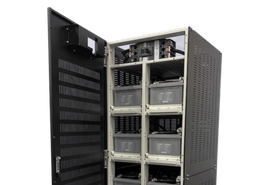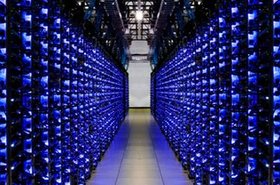The fast growth of data centers around the world has taken place in parallel with an increased focus on sustainability. So, while new data centers open, and electricity consumption rises steadily, balancing this business growth against green credentials becomes a challenge. As a result, data centers are increasingly focused on delivering a more efficient, low (or no) carbon footprint operation, and more emphasis is placed on optimizing electronics efficiency and procuring ‘green’ energy.
But there’s another sustainability challenge that data centers have regularly overlooked: the batteries.
This is now changing however with Scope 3, the most comprehensive review of anything in the data center now being available for batteries or energy storage, meaning they are now part of carbon accounting.
Now able to be a part of carbon accounting.
Steve Jennings, SVP at ZincFive Inc, sees this as an important step for the industry: “Is there a role for energy storage in data center sustainability? In our view, the answer is a resounding yes. Everybody's looking at sustainability as a very important factor in the industry, and we think it's time that the energy storage assets within the industry also participated in this effort.”
With much discussion about ‘building back better’ and ‘green new deals’, Jennings was speaking at a timely DCD panel discussion in February on the role of battery technology climate impact and sustainability. He focused not just on the increased accountability and measurement of existing battery processes but also on solutions.
“To make the sustainable choice, data center operators should consider nickel-zinc (NiZn) batteries. They consist mainly of common, highly available materials, are non-flammable, and fail-safe with the lowest climate impact of battery chemistries popular in the data center,” said Jennings.
A second expert voice also joined this panel. Fernanda Avila Swinburn is a Senior Research Analyst at market intelligence and analytics firm Boundless Impact, where she assesses the environmental impact of new technologies.
For Avila Swinburn and her team, a focus on their analysis of batteries gives a far more accurate view of sustainability credentials; “Scope 3 is the only analysis that provides investors with a clear understanding of climate and business risk in a company’s supply chain. How we at Boundless Energy review batteries is from a cradle to grave perspective that covers the entire life cycle, from type and origin of raw materials, transportation, energy and water inputs and location. This is why Scope 3 is so important, as without it, the impact of these raw materials wouldn’t be known.”
Delivering against both performance and sustainability criteria.
Jennings sees this change as key for both today and tomorrow: “When we now look at battery technology, and how it can work with climate impact and sustainability, we have data available to assess what you have currently installed and measure it against metrics. But it's also important to look ahead at the future. There's the opportunity for the data center industry to establish sustainability criteria for battery sourcing, not just by looking at your current inventory, but also with alternatives now available, at future acquisitions of battery technology that can deliver against both performance, and sustainability criteria.”
As the old saying goes, if you can’t measure, you can’t manage; and the widening of assessments of batteries, via Scope 3, will enable better, greener choices for those making purchasing decisions.
Watch the full panel discussion, "Panel: Battery technology climate impact and sustainability", on-demand:
Further reading
-

Backup battery choices for keeping 5G up on the Edge
Edge nodes will make high demands on their backup power. What technologies will make the grade?
-

ZincFive releases nickel-zinc battery cabinet for megawatt class UPS
Just when you were getting used to lithium-ion
-

Ministry of the Interior approves Google Luxembourg data center, but more still needed
Five years on, the project still has yet to break ground

